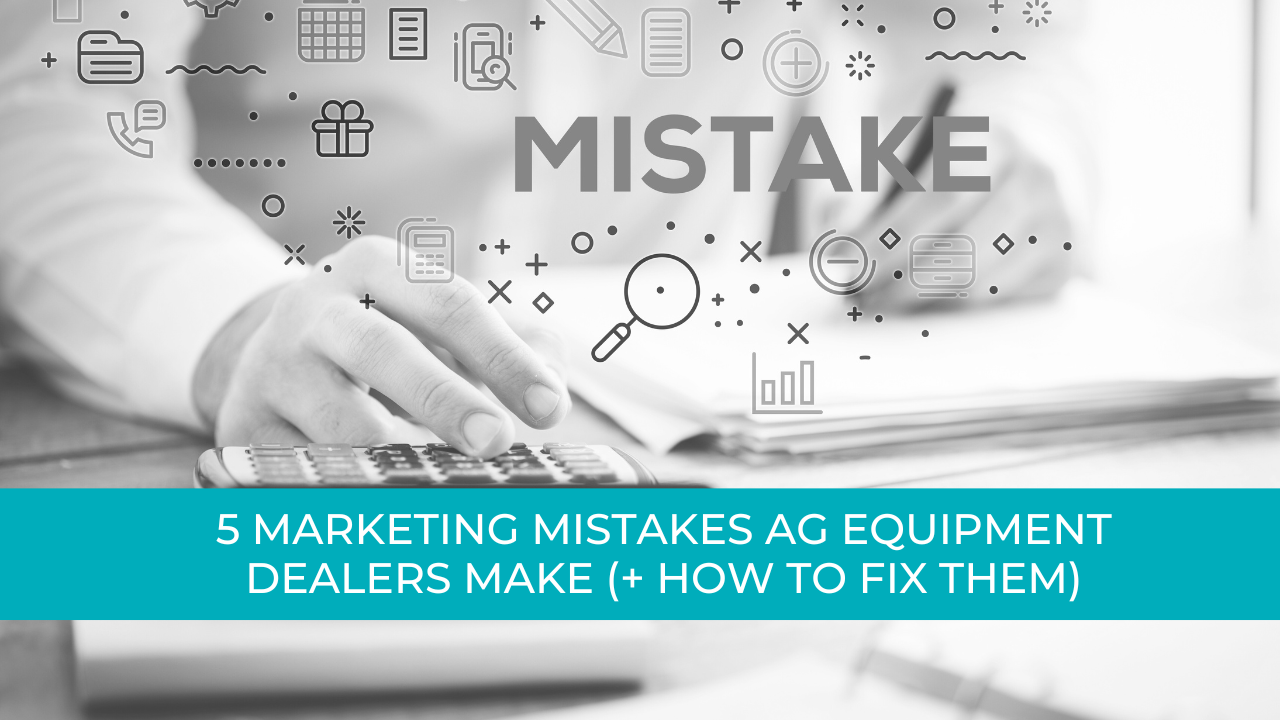Agtivation Blog
What's New In The Digital Ag World
What Are Key Strategies for Customer Journey Mapping?
Did you know that most companies fail to understand their customers' needs effectively? This
gap can lead to missed opportunities and diminished loyalty. To navigate this challenge, you
need to adopt strategic approaches in customer journey mapping. By pinpointing touchpoints
and engaging with customers at every stage, you can create a more tailored experience. But
what specific strategies can you implement to truly enhance your customers' journeys?

Key Takeaways
● Identify and analyze customer touchpoints to evaluate engagement stages and improve
interaction quality throughout the customer journey.
● Develop detailed customer personas to understand motivations, pain points, and
behavior patterns for tailored marketing efforts.
● Utilize customer feedback to identify pain points and prioritize changes that significantly
enhance the customer experience.
● Track milestones and engagement metrics to measure the effectiveness of the customer
journey and adapt strategies accordingly.
● Create seamless experiences by providing personalized content and timely support to
foster trust and encourage repeat business.
Understanding the Customer Journey
When you think about your customers, it's important to understand the journey they take from
discovering your business to making a purchase. This journey begins with customer awareness,
where potential buyers first encounter your brand. They might find you through social media,
online ads, or word-of-mouth. Once they're aware, they enter the decision-making process,
weighing options and considering how your products meet their needs.
To support this journey, you should provide valuable information and engaging content that
addresses their questions and concerns. By anticipating their thoughts and feelings at each
stage, you can create a more empathetic and strategic approach, ultimately guiding them
toward a confident purchase decision. Understanding this journey helps you tailor your
marketing efforts effectively.
Identifying Customer Touchpoints
How can you truly connect with your customers throughout their journey? It starts with
identifying customer touchpoints. These moments—whether it's a website visit, a social media
interaction, or a phone call—are essential for understanding customer interactions. Conducting
a touchpoint analysis helps you pinpoint each stage where customers engage with your brand.
By mapping these touchpoints, you can see what works well and what needs improvement.
Think about how each interaction influences customer perceptions and decisions. Are they
finding what they need easily? Are they receiving timely responses? Addressing these
questions fosters a deeper connection and builds trust. Ultimately, knowing your touchpoints
allows you to create a seamless experience that keeps customers coming back.
Creating Customer Personas
Creating customer personas is essential for understanding your audience and tailoring your
marketing efforts. By identifying their pain points, you can craft messages that truly resonate
and drive engagement. This strategic approach not only enhances your communication but also
builds stronger relationships with your customers.
Understanding Your Audience
Understanding your audience is essential for any agricultural business aiming to thrive online,
as it allows you to tailor your marketing efforts effectively. Start by utilizing audience
segmentation to identify different customer groups within your market. This helps you create
targeted messages that resonate with their specific needs and preferences. Next, gather
behavioral insights by analyzing past interactions, purchases, and feedback. This data reveals
what motivates your audience and what challenges they face. By developing detailed customer
personas, you can better understand their journeys, ensuring your content and campaigns
speak directly to them. This strategic approach not only enhances engagement but also builds
trust, setting the stage for long-lasting relationships in your agricultural business.
Identifying Pain Points
Identifying pain points is key to shaping effective customer personas that truly reflect your
audience's needs. To do this, you must conduct a thorough pain assessment, focusing on the
challenges your customers face. Engage with your audience through surveys or conversations
to uncover their frustrations and obstacles. By understanding their customer needs, you can
create personas that encapsulate their experiences and motivations. This insight allows you to
tailor your offerings and communication strategies to address these pain points directly. When
your personas resonate with your audience, you'll foster stronger connections, ultimately
leading to increased loyalty and satisfaction. Remember, the more accurately you identify these
pain points, the better equipped you are to meet your customers where they are.
Crafting Targeted Messages
When you know your audience well, crafting targeted messages becomes much easier and
more effective. Start by developing customer personas based on audience segmentation. These
personas represent the various types of customers you serve, allowing you to tailor your
messaging to their specific needs, interests, and pain points. Think about what drives each
persona—what challenges they face and what solutions your product offers. By focusing on
these elements, you'll create targeted messaging that resonates deeply. This approach not only
engages your audience but also builds trust, as they see you understand their unique situations.
Ultimately, effective customer journey mapping hinges on your ability to connect with each
persona through meaningful, relevant content.
Mapping Out the Customer Journey
How can you truly connect with your customers throughout their journey? Start by mapping out
the various journey stages, from awareness to decision and beyond. At each stage, consider
customer emotions—they play an essential role in how your audience perceives your brand. By
understanding their feelings, you can tailor your messaging and offerings to meet their needs
effectively.
For instance, during the awareness stage, customers may feel curious or overwhelmed; provide
clear, engaging content to ease their concerns. In the decision phase, they might feel anxious;
offering testimonials or case studies can instill confidence. By aligning your strategies with
customer emotions at every stage, you can create a more meaningful and impactful experience
that fosters lasting relationships.
Analyzing Customer Behavior
Understanding customer behavior is key to enhancing their journey and building lasting
connections. By analyzing customer motivations and behavior patterns, you can tailor your
approach to meet their needs more effectively. Here are some strategies to contemplate:
● Identify triggers that influence customer decisions.
● Observe how customers interact with your online platforms.
● Segment your audience based on their behavior patterns.
● Use feedback to refine your understanding of customer motivations.
Finding Opportunities for Improvement
Where can you find opportunities to improve your customer journey? Start by closely examining
the interactions your customers have with your brand. Look for friction points—those moments
where the customer experience falters. Are there confusing website elements? Is information
hard to find? Identifying these areas allows you to implement journey optimization strategies.
Gather feedback from your customers; their insights can reveal hidden pain points. Consider
their emotions at each stage of the journey—understanding their feelings can lead to more
empathetic solutions. By regularly evaluating and refining these touchpoints, you not only
enhance customer experience but also foster loyalty. Remember, continuous improvement is
key to staying ahead in today's competitive landscape.
Engaging Customers at Each Stage
Once you've identified areas for improvement in your customer journey, the next step is to
engage your customers at each stage of their experience. Effective engagement techniques can
greatly enhance customer satisfaction and foster loyalty. Here are some strategies to reflect on:
● Create personalized content that resonates with your audience.
● Use social media to interact and gather feedback in real-time.
● Offer timely support through chatbots or customer service representatives.
● Share educational resources that align with their needs at different journey stages.
Utilizing Feedback for Refinement
Feedback is a powerful tool that can considerably enhance your customer journey. By actively
seeking input from your customers, you create feedback loops that allow you to understand their
experiences better. This understanding is essential for identifying pain points and areas needing
improvement. Embrace their insights as part of a strategy for continuous improvement, adjusting
your approach based on what you learn.
Regularly collect feedback through surveys, social media, or direct conversations, and analyze
the data to pinpoint trends. Use this information to refine your customer touchpoints, ensuring
each interaction is more effective than the last. By valuing your customers' opinions, you not
only enhance their journey but also foster loyalty, making them feel heard and valued.
Implementing Changes and Strategies
Understanding your customers' experiences is just the beginning; now it's time to take action.
To truly enhance your customer experience and optimize their journey, consider the following
strategies:
● Identify Pain Points: Analyze feedback to pinpoint where customers struggle.
● Prioritize Changes: Focus on changes that greatly impact customer satisfaction.
● Test and Iterate: Implement changes in phases, using customer feedback for
adjustments.
● Train Your Team: Make certain everyone understands the new strategies and their
roles in delivering a better experience.
Measuring Success and Adjusting Plans
To truly understand how well your customer journey mapping is working, you need to track key
milestones along the way. By keeping an eye on these critical points, you can adapt your
strategies effectively and guarantee you're meeting your customers' needs. Remember,
flexibility is key to refining your approach and achieving better results.
Tracking Key Milestones
Tracking key milestones in your digital marketing efforts is essential for understanding how well
your strategies are working. By monitoring these milestones, you can gain insights into
customer engagement and optimize their journey. Here are some key aspects to focus on:
● Customer Feedback: Regularly collect and analyze feedback to understand their
needs.
● Engagement Metrics: Track social media interactions and website visits to gauge
interest.
● Conversion Rates: Measure how many prospects become customers after interacting
with your content.
● Retention Rates: Monitor how many customers return for repeat business to assess
loyalty.
Adapting Strategies Effectively
As you navigate the ever-changing landscape of digital marketing, it's essential to stay flexible
and ready to adapt your strategies. Regularly measuring success helps you understand whether
you're meeting customer expectations and if your journey optimization efforts are effective. Use
tools like customer feedback and analytics to gauge how well your current strategies resonate
with your audience. If you notice gaps between their expectations and your offerings, don't
hesitate to adjust your plans. This might mean tweaking your messaging, enhancing your
website's user experience, or refining your marketing tactics. By being proactive and
responsive, you'll better align your strategies with what customers truly want, ensuring a more
engaging and effective customer journey.
Frequently Asked Questions
How Can I Involve My Team in the Mapping Process?
To involve your team in the mapping process, initiate team brainstorming sessions. Assign roles
based on strengths, encouraging participation. This strategy fosters collaboration, ensuring
everyone contributes valuable insights and feels invested in the project's success.
What Tools Can Help Visualize the Customer Journey?
To visualize your customer journey effectively, consider using journey visualization tools or
customer journey software. These resources help you map interactions, identify pain points, and
enhance overall customer experience, making your strategies more impactful and informed.
How Often Should I Update My Customer Journey Map?
How often do you think you should revisit your journey updates? Regular mapping frequency is
essential; consider updating your map whenever customer feedback changes or new trends
arise to stay aligned with your audience's needs.
Can Customer Mapping Benefit Seasonal Agriculture Businesses?
Yes, customer mapping can enhance your seasonal agriculture business. By understanding
customer engagement and seasonal trends, you'll tailor your marketing efforts, ensuring you
connect effectively with customers when they're most likely to engage.
How Do I Handle Negative Customer Feedback During Mapping?
Negative feedback can sting, but it's often just constructive criticism in disguise. Embrace it
strategically; analyze concerns, respond empathetically, and adjust your approach. This'll help
you strengthen relationships and enhance your customer journey mapping.
Final Thoughts
As you navigate the winding river of customer experience, remember that every twist and turn
represents a touchpoint in their journey. By mapping these waterways, you'll uncover hidden
gems—insights that lead to deeper connections. Embrace the currents of feedback, adjusting
your sails to meet the shifting winds of customer needs. In this ever-evolving landscape, your
strategic choices can transform mere encounters into lasting relationships, ensuring your brand thrives in the hearts of those you serve.














